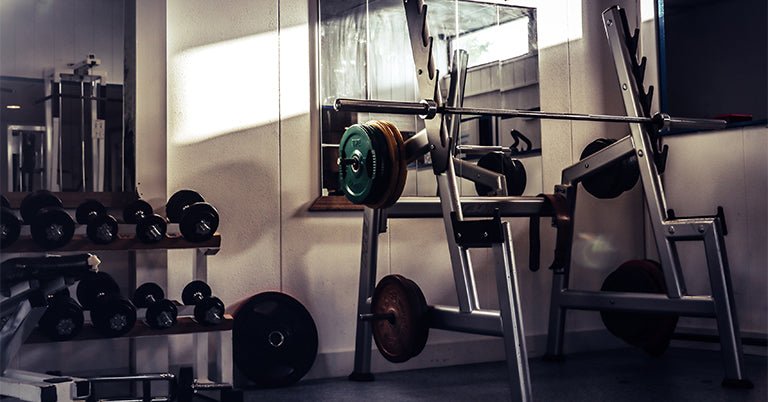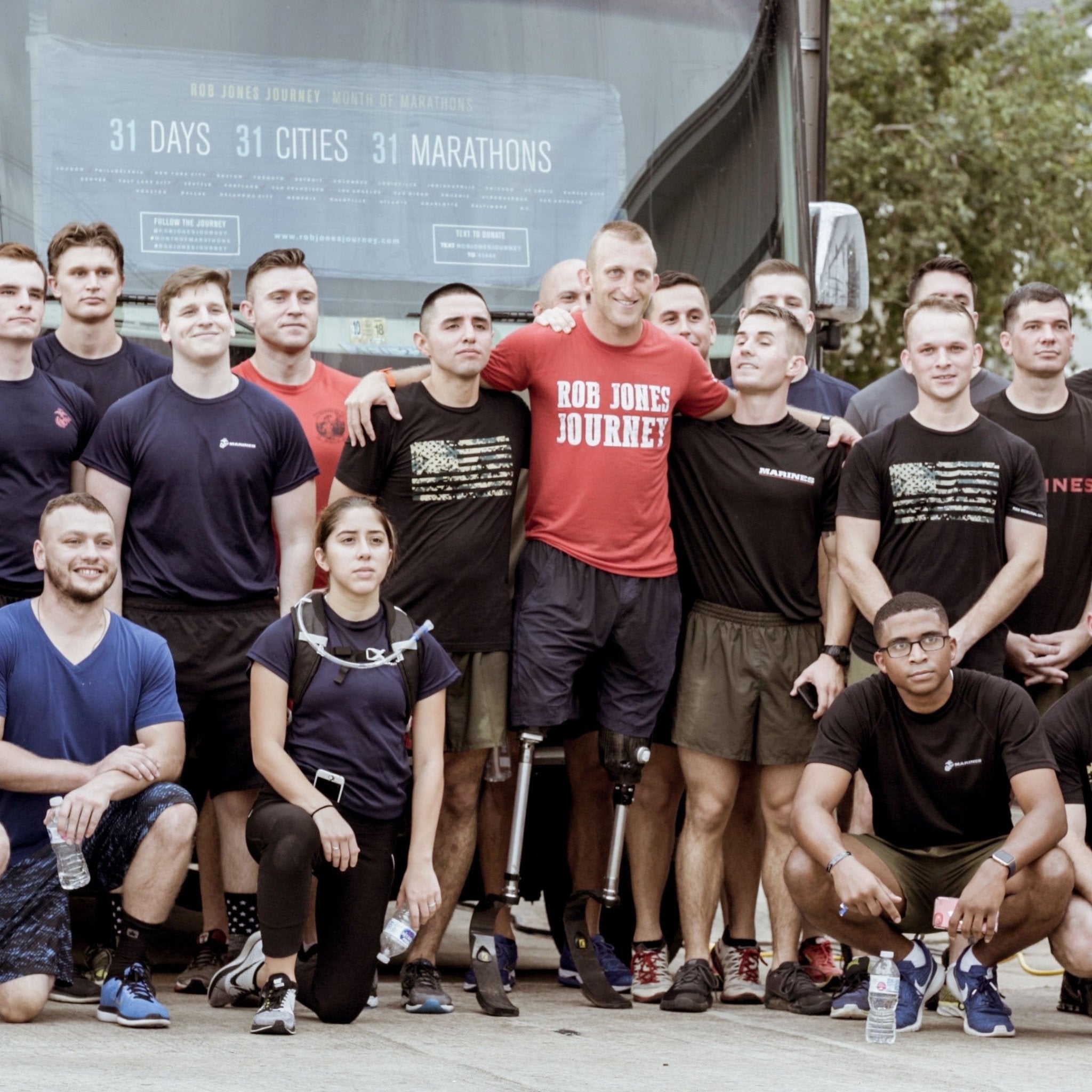Home gym ideas to help create your ideal workout space.
For some of us, the social aspect of the gym is half the reason to go. We love to pump iron and work up a sweat in public, chat with our treadmill neighbor, and gossip in the locker room. For others, gymtimidation is real, and actually deters us from working out. Others of us may be perfectly comfortable at the gym, but have trouble getting there as often as we would like, due to our busy schedules and work and family demands.
Enter, the home gym. If you need quick access to workout equipment to get your training in while the kids are asleep, in between conference calls, or without the hassle of traveling to and from the health club or if you simply don’t want to do your exercise on display, you’re an ideal candidate for a home gym.
Home gym designs range from a fully dialed fitness den to a single piece of cardio equipment or a weight bench sharing space with your home office. Here’s the good news: a home gym doesn’t need to crush your budget. Sure, you can spend a lot on a full suite of top-of-the-line equipment; but you can also find perfectly good second-hand equipment, or invest in just one or two pieces that you know you’ll use the most. And don’t forget with a home gym, you’ll save on monthly health club fees, easily enough to make the expenditure a wash.
Ready to get started? Here’s what to take into account when considering home gym designs:
Define Gym
First things first define what the gym means to you. What type of workouts do you want to be able to do at home, and how much space and equipment will you need to make this happen? Do you simply need one or two pieces of workout equipment (for example, a treadmill plus a set of free weights; or a space to lay out your mat and practice daily yoga), or do you need a full fitness setup (a multi-station gym and multiple pieces of cardio equipment).
If you’re not quite sure what you’ll use the most or if you’re counting on the addition of a home gym to inspire you to workout start small. Choose a few basics, then expand your home gym and add bigger ticket items once you’re confident you’ll use them and have a better idea of the specific fitness activities you’ll enjoy.
Determine Your Space
How much space will you need for your home gym? According to the American Council on Exercise, here are some guidelines for gym equipment space requirements:
- Treadmill or elliptical machine 30 square feet
- Stationary bike 10 square feet
- Rowing machine 20 square feet
- Free weights 20-50 square feet
- Single-station gym 35 square feet
- Multi-station gym 50-200 square feet
Of course, you can use TRX cables in any solid doorway, and a yoga mat can be unrolled pretty much anywhere, inside or out. But if you prefer a permanent workout location, you’ll need to plan according to the space you have or can create in your home.
There are arguments for using a dedicated room as your home gym, as well as for incorporating your workout equipment into a shared space. A dedicated room is great if you have plenty of space, you prefer a gym that’s a haven from the rest of the house, you don’t want the noise from gym equipment or entertainment to disturb other members of the household, or if you want to close the door on your training room when you’re done sweating for the day. A shared-purpose room is a better option if you’re short on space, you only need a small fitness setup, or you’re more likely to motivate with your gym equipment right in your face.
Envision Your Ideal Digs
The exact location of your gym depends a great deal on the layout and space of your home, and whether you will have a shared-purpose room or a dedicated gym space. And there are other factors to think about, too.
Temperature and airflow are very important in planning your home gym design. In many instances, a basement or garage is ideal, since these are usually the coolest locations in any house. If you don’t have a naturally cool room for your home gym, you’ll want one with windows that open for added ventilation. Additionally, for high heart rate exercise, a well-positioned floor or ceiling fan is a must.
Noise is also a factor another reason you may want to workout in your basement or garage. Concrete slab floors (common in basements and garages) will absorb noise and vibrations from cardio equipment, and they’re easy to cover with interlocking rubber floor mat tiles for safety and comfort in your free weight and stretching areas.
Lighting is a consideration, too. Do you prefer the dark, cave-like setting of a basement? Or would you rather create a yoga retreat in a spare bedroom or living room with a soaring ceiling and great natural light? Maybe you have attic space with a cool, funky vibe, perfect for strength work and stretching. Make sure the space you choose is comfortable and inviting so you’ll be sure to spend plenty of time there.
If you opt to go the shared-purpose room route, a barely used guest bedroom or a portion of your home office are excellent settings for your home gym. Adding workout equipment to a large living room may give you the daily motivation reminder that you need. Your master suite may be the perfect place for a treadmill. On the other hand, if a treadmill in your bedroom will get more use as a clothes hanger, rather than as a cardio tool, you might be better off creating your workout space elsewhere.
You can also spread workout stations throughout the house there’s no rule that says a home gym should be confined to one room. Think treadmill in the basement, exercise bike in the living room, free weights in the garage, and a pull-up bar and TRX cables in a doorway. You can even integrate workout equipment with your home office furniture by choosing a treadmill desk or a Desk Cycle.
Outfit Your Gym
Once you know the type of home gym you want and how much space you have, it’s time to go shopping. Again, you don’t need to break the bank to get buff at home. You’ll find great deals on second-hand workout equipment on sites like eBay and Craigslist. Also search local moving sales, as heavy fitness equipment is often left behind. Check with local health clubs, as well; oftentimes they’ll upgrade cardio equipment and sell used treadmills, elliptical machines, stair climbers, and the like. And remember, you don’t need to buy every item all at once or ever, if it’s something you won’t realistically use. Start small, stick with what you feel confident will work best for your workout program, and expand as your interests and abilities grow. Here are some items to consider, depending on your wants and needs.
Cardio Equipment
- Treadmill
- Elliptical machine
- Rowing machine
- Stationary bike or trainer (to use with an existing bike)
Strengthening & Stretching Equipment
- Free weights
- Kettlebells
- Barbell, plates & bench set
- Single-station or multi-station gym
- Resistance bands (TRX or other)
- Stability ball
- Ropeless jump rope
- Yoga mat
- Foam roller
Miscellaneous
- Mirror
- Music/video player
- Inspirational artwork
- Floor covering
- Fan
- Towels
And of course, don’t forget a BlenderBottle shaker. Even at home, it’s important to stay fueled and hydrated. The BlenderBottle SportMixer is an ideal match for your home gym, as it doubles as a protein shaker and a water bottle, making it a workout accessory you’ll want to keep close at hand.
With all of this information, you’re ready to put together the perfect gym for you one that will help you get and stay fit, from the comfort of your own home!
Do you have an interesting home gym design? We’d love to hear about it, or see it! Share a pic on Instagram and tag @BlenderBottle.





Leave a comment
All comments are moderated before being published.
This site is protected by reCAPTCHA and the Google Privacy Policy and Terms of Service apply.